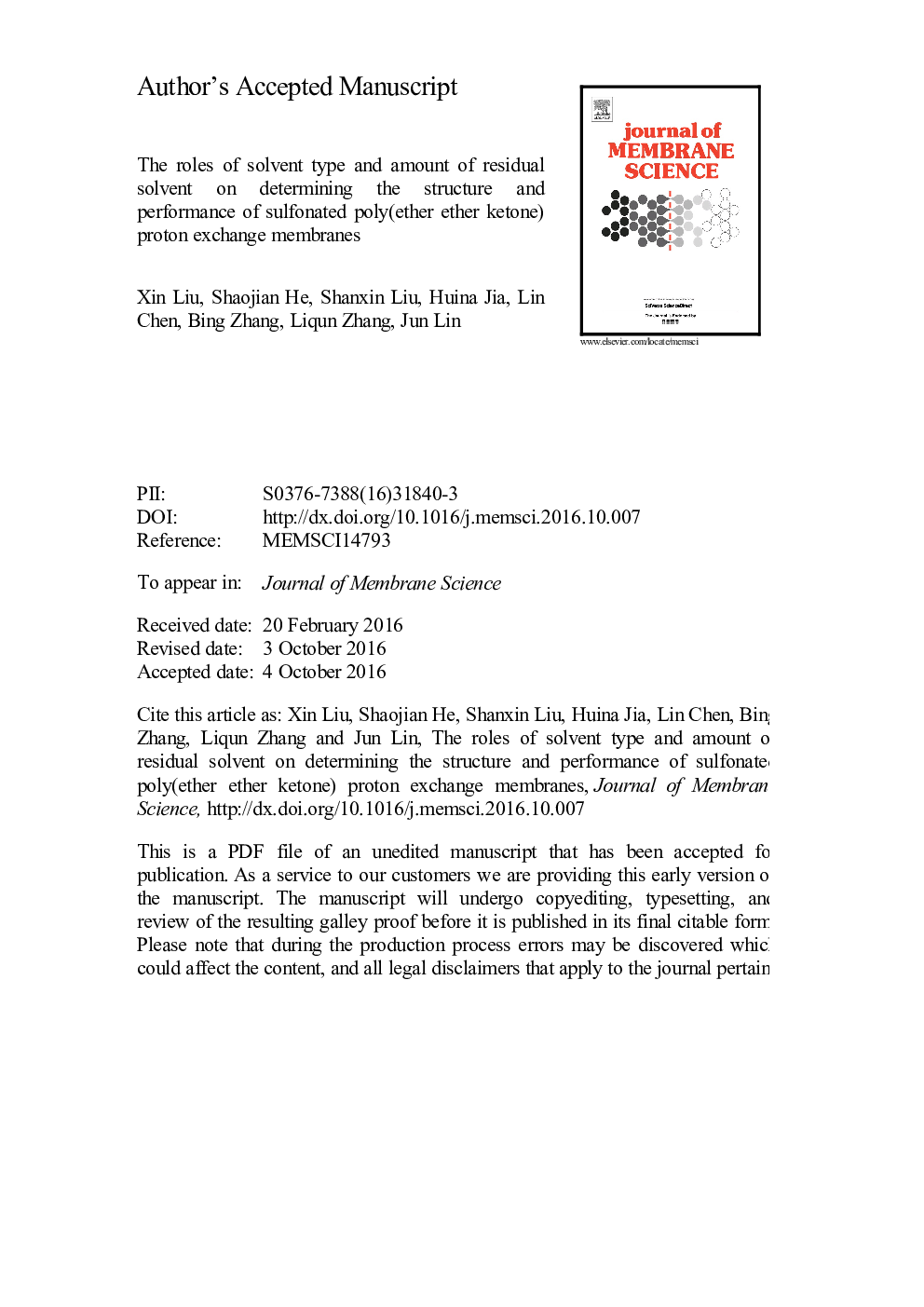| Article ID | Journal | Published Year | Pages | File Type |
|---|---|---|---|---|
| 4989043 | Journal of Membrane Science | 2017 | 37 Pages |
Abstract
Our previous work demonstrated that the amount of residual solvent (RS) content plays an important role in determining the structure and properties of sulfonated poly(ether ether ketone) (SPEEK) membranes cast from dimethylacetamide (DMAc). In this work, another three most commonly used solvents during the preparation of proton exchange membranes (PEMs), including dimethylformamide (DMF), dimethylsulfoxide (DMSO) and N-methyl-2-pyrrolidone (NMP), were employed to prepare SPEEK membranes of different degrees of sulfonation (DSs) with controlled amount of RS content. It was found that the effect of RS content on membrane water uptake is quite universal, as the treated SPEEK membranes of the same DS always showed the same water uptake with the same amount of RS content, regardless of solvent types. Larger RS content always corresponded to the higher water uptake. For SPEEK membranes with relatively high DS, proton conductivity remained almost the same for the treated membranes cast by different solvents when the RS content is the same. While at low DS, the solvent type came into play and also affected the membrane structure and properties: the SPEEK membrane cast by DMSO always exhibited higher proton conductivity than those cast by other solvents with the same RS content. Such phenomena were related to the characteristic structure difference including the size of hydrophilic domains, crystalline structure and polymer chain mobility, which was caused by the different degree of solvent-polymer interaction.
Related Topics
Physical Sciences and Engineering
Chemical Engineering
Filtration and Separation
Authors
Xin Liu, Shaojian He, Shanxin Liu, Huina Jia, Lin Chen, Bing Zhang, Liqun Zhang, Jun Lin,
